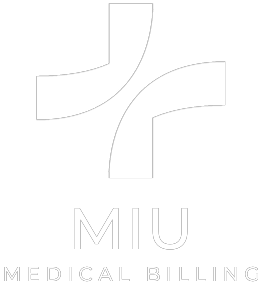Being a provider also comes with a high demand for knowledge and familiarity with common and important medical billing terms. This is crucial, especially for healthcare providers who have a private practice and primarily focus on patient care. This aids in keeping a check and is essential to monitor the revenue cycles, ensuring compliance with regulation and, most importantly, avoiding errors.
If you are a provider who wants to increase their knowledge of medical billing, this blog is for you. Here are the top 10 medical billing terms every provider should know to streamline their billing efficiently.
1. Explanation of Benefits (EOB)

After the claim has been processed, an insurance company sends a statement to the provider and the patient. This statement is called an Explanation of Benefits (EOB), and it contains details such as what the insurer paid, services billed, the patient’s responsibility, and any reasons for claim denial or adjustments.
Though this is not the actual bill, it is very crucial for understanding the details regarding reimbursements.
2. Current Procedural Terminology (CPT) Codes
As discussed previously in one of our blogs, CPT codes refer to the standardized and specific numerical codes given to describe any healthcare service, such as any procedure, investigation, or treatment a patient receives. The healthcare system, billing departments, and insurance companies greatly benefit from this as it ensures simplicity and uniformity in the documentation of the billing all across the healthcare industry.
However, the medical coder should be cautious enough during his work, as any error can negatively affect the payments. Hence, you should know the correct CPT codes for accurate claim submission.
3. International Classification of Diseases (ICD) Codes
The World Health Organization (WHO) has set standard codes to classify diseases and diagnoses. These special types of codes are called the International Classification of Diseases (ICD) codes.
The latest update for diagnosis coding in the U.S. is ICD-10 CM (Clinical Modification). For a claim to be approved, it is important to be well-versed with these codes and properly use them during medical coding.
4. National Provider Identifier (NPI)
Any healthcare provider registered officially is given a unique 10-digit number by the Centers for Medicare & Medicaid Services (CMS). This number is most often called the National Provider Identifier (NPI) and is required for transactions compliant with HIPAA. NPI has two types of categories: type 1 is usually for individual providers, and type 2 is given to organizations such as hospitals and private practices.
NPI is important in billing as it confirms the authenticity of the healthcare provider or a healthcare setup.
5. Claim Denial
When there is any problem with the claim, the insurance company tends to deny the claim, which, in simple words, means that they refuse to pay the provider for their service. This is known as a claim denial.
This can occur due to various possible problems like incorrect coding, services that are not covered by the insurance plan, missing insurance, and lack of medical necessity. Hence, catching the error and understanding the reason behind the claim denials help in the correction and prevention of errors.
6. Revenue Cycle Management (RCM)
The financial process carried out by healthcare practices to keep a record of patient visits from the appointment registration to the final payment is called Revenue Cycle Management (RCM). RCM consists of charge capture, insurance verification, claims submission, payment collection, coding, and billing.
You need to have an efficient RCM as a provider for a better cash flow, fewer denials, and overall streamlining of your running practice.
7. Clearinghouse
There’s a middleman between the insurance companies and the healthcare providers, and this is called the Clearinghouse. They keep a check on claims for errors, correct formatting of the claims, and forward them to payers. This greatly helps reduce the number of rejected claims and speeds up the processing of the payment.
8. Modifier

When a medical coder has to provide additional information about the performed service, they add an additional two-character code to the CPT code. This two-character code is called a modifier. These are beneficial in simplifying the codes if multiple procedures are carried out, any alterations to the service, and if there is any repetition of a procedure.
9. Patient Responsibility
The insurance doesn’t pay the entire amount; some portion of it has to be paid by the patient after the insurance processes the claim. This is referred to as patient responsibility and includes copayments, coinsurance, deductibles, and non-covered services. The patient must be aware of the patient’s responsibility.
10. Coordination of Benefits (COB)
When a patient has multiple insurance policies, it is referred to as Coordination of Benefits (COB). It usually works through a primary insurance company that pays first and what the other insurances cover. It is critical to record the correct COB so that over- or underpayments can be avoided.
Want to learn more?
Medical billing holds a vast array of knowledge, and this does not end with these top 10 medical billing terms. It is essential for providers to have a good understanding of at least these essential medical billing terms to have control of their healthcare practice finances. This can have a great impact on the cash flow and the running of a setup with a focus on delivering the best care to the patients.
Learn more about how to streamline your medical billing with MIU Medical Billing!




